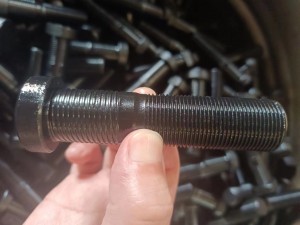There are many standards for bolt threads, including the following:
1.Metric Thread: Metric threads are divided into coarse thread and fine thread, with common standards including ISO 68-1 and ISO 965-1.
ISO 965-1 is a thread standard developed by the International Organization for Standardization for the design and specification of metric threads. This standard specifies parameters such as dimensions, tolerances, and thread angles for metric threads. The ISO 965-1 standard mainly includes the following contents:
Dimensional specifications: The ISO 965-1 standard specifies the diameter, pitch, and other dimensional specifications for metric coarse and fine pitch threads. Among them, the specification range of coarse thread is M1.6 to M64, and the specification range of fine thread is M2 to M40.
Tolerance and deviation regulations: The ISO 965-1 standard determines the tolerance and deviation range of threads to ensure interchangeability and reliability of threads.
Thread angle: The ISO 965-1 standard specifies a thread angle of 60 degrees for metric threads, which is also the most common angle for metric threads.
2.Unified Thread: English threads are commonly used in the United States and some Commonwealth countries, with common standards such as UNC, UNF, UNEF, etc.
3.Pipe Thread: Pipe threads are commonly used for pipeline connections, with common standards including NPT (National Pipe Thread)and BSPT(British Standard Pipe Thread), etc.
4.Special threads: In addition to the common thread standards mentioned above, there are also some special thread standards, such as tap threads, triangular thread, etc., designed for specific application scenarios.
The selection of the correct bolt thread standard should be determined based on specific usage requirements and national/regional standards to ensure that the bolts can be correctly and safely applied to the corresponding equipment or structure.
Post time: Oct-26-2023



